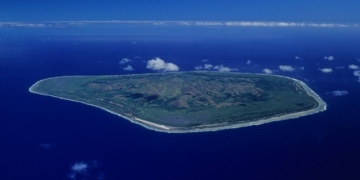With this special arrangement, the Terracotta Army in the tomb of Emperor Qin Shi Huang can undertake various roles during battle.
In the third excavation at Pit 1 of the tomb located in Xi’an (China), archaeologists have made new discoveries about the formation of the Terracotta Army.
Previously, the formation in Pit 1 was believed to be symmetrical along the north-south axis, concentrated at the sixth tunnel.
Mr. Shen Maosheng, a researcher at the Qin Shi Huang Tomb Museum, stated: “This time, we have made some groundbreaking discoveries. In the third excavation covering an area of over 400m2, we found that the terracotta soldiers in front of the eighth tunnel were equipped with long weapons, while the soldiers behind them used bows and arrows. The same was true for the ninth tunnel. All soldiers in the tenth tunnel were holding long weapons.”

Researchers find the Terracotta Army arranged with different hairstyles, outfits, and weapons. (Photo: CGTN)
This expert also noted that most of the terracotta warriors in the eleventh tunnel used bows and arrows, with a few warriors equipped with long weapons, all of whom were commanders.
Notably, the research team also discovered part of the formation model of the army in Pit 1. For instance, at the front were warriors in armor, referred to by experts as the vanguard. On either side of the vanguard were terracotta soldiers wearing scarves. All warriors in the middle row had their hair styled in buns. Behind them were soldiers with flat topknots. Interestingly, warriors with different hairstyles stood in different positions and may have been responsible for distinct tasks during combat.
Through this arrangement, researchers can gain more visual and specific insights into the army.
“We aim to publish our research as soon as possible so that more people can learn about the army,” Mr. Shen Maosheng shared.
The Terracotta Army: A Shock Discovery in the 20th Century
In 1974, farmers near Xi’an, Shaanxi Province (northwest China) made an extraordinary discovery. This led to the excavation of the Terracotta Army, part of the vast tomb complex dedicated to Qin Shi Huang, the first emperor of China. Researchers found terracotta warriors at the foot of Mount Li.

Terracotta warriors in the tomb of Qin Shi Huang were first discovered in 1974. (Photo: National Geographic)
The Terracotta Army consists of over 8,000 warriors buried in pits far from the center of the tomb. When first discovered and excavated, the warrior statues still retained their painted colors on their faces and clothing. According to experts, not only the postures and costumes, but the faces of the statues were so vivid that they resembled living beings.

Experts were amazed by the lifelike faces of the terracotta soldiers. (Photo: Historycollection)
The tomb of Emperor Qin Shi Huang is located in Xi’an, Shaanxi Province. According to historian Sima Qian, this tomb was built by hundreds of thousands of people over nearly 40 years, completed around 208 BC. Covering an area 70 times larger than the Forbidden City, it is considered the largest individual tomb in the world. The underground structures remain nearly intact.
After thoroughly examining the area and finding no breaches indicating tomb raiders had entered, some archaeologists believe that the central tomb containing the remains of Emperor Qin Shi Huang has remained undisturbed for thousands of years.

The central area of the tomb, where the remains of Emperor Qin Shi Huang are located, remains a great mystery yet to be explored. (Illustration by Ancientorigins)
The discovery of the Terracotta Army is still regarded as one of the greatest finds at the tomb of Emperor Qin Shi Huang. To this day, archaeologists and scientists continue their efforts to study the Terracotta Army and the hidden secrets within the tomb of the first emperor in Chinese history.


















































